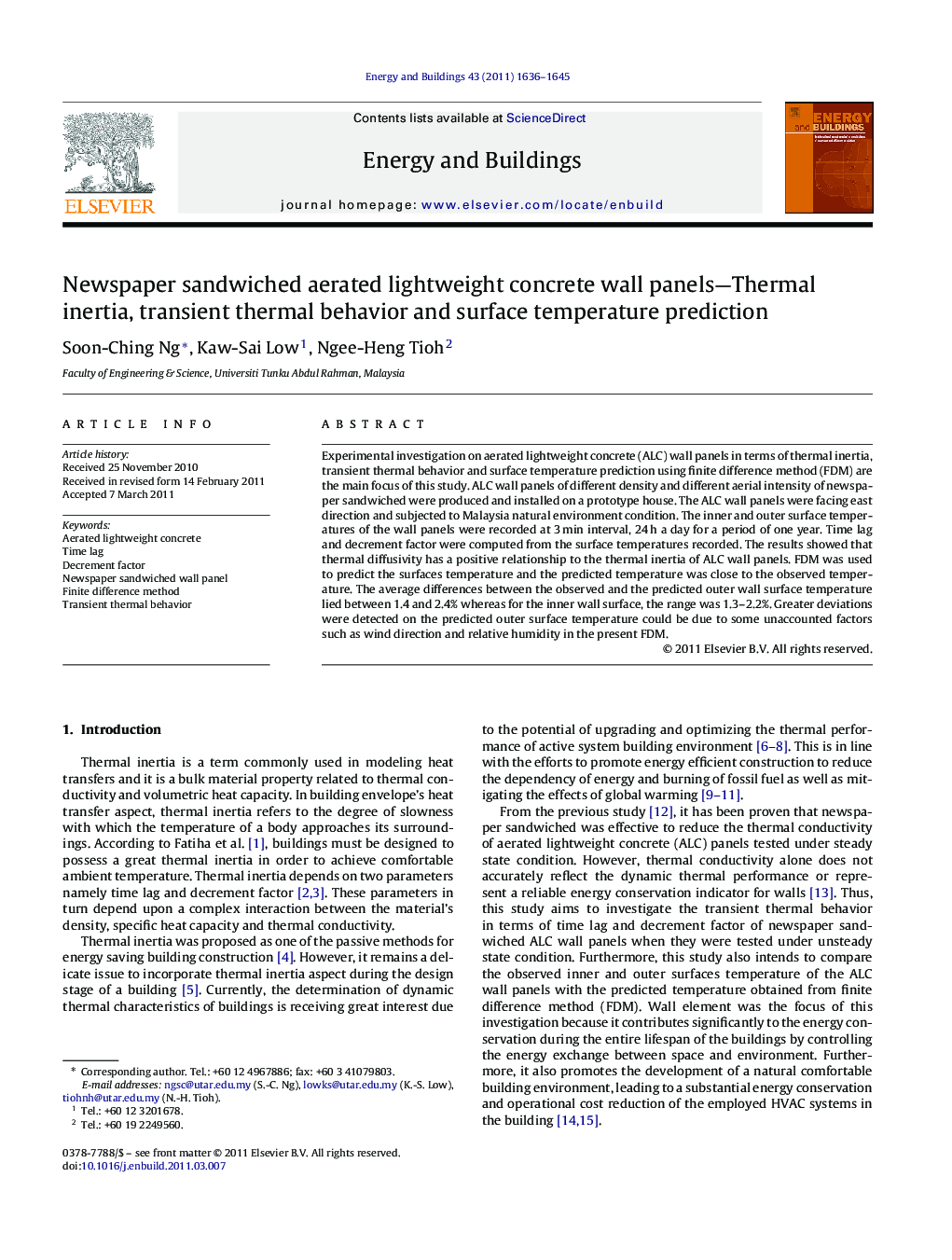| Article ID | Journal | Published Year | Pages | File Type |
|---|---|---|---|---|
| 264520 | Energy and Buildings | 2011 | 10 Pages |
Experimental investigation on aerated lightweight concrete (ALC) wall panels in terms of thermal inertia, transient thermal behavior and surface temperature prediction using finite difference method (FDM) are the main focus of this study. ALC wall panels of different density and different aerial intensity of newspaper sandwiched were produced and installed on a prototype house. The ALC wall panels were facing east direction and subjected to Malaysia natural environment condition. The inner and outer surface temperatures of the wall panels were recorded at 3 min interval, 24 h a day for a period of one year. Time lag and decrement factor were computed from the surface temperatures recorded. The results showed that thermal diffusivity has a positive relationship to the thermal inertia of ALC wall panels. FDM was used to predict the surfaces temperature and the predicted temperature was close to the observed temperature. The average differences between the observed and the predicted outer wall surface temperature lied between 1.4 and 2.4% whereas for the inner wall surface, the range was 1.3–2.2%. Greater deviations were detected on the predicted outer surface temperature could be due to some unaccounted factors such as wind direction and relative humidity in the present FDM.
► Transient thermal behaviour of four different wall panels were investigated. ► Thermal inertia for all panels was computed from the one year temperature data. ► Thermal diffusivity has a positive relationship to the thermal inertia of the panels. ► FDM-predicted surface temperatures were compared with observed temperatures. ► Additional factors should be included in FDM for better temperature prediction.
